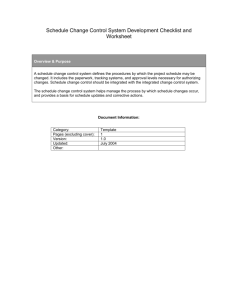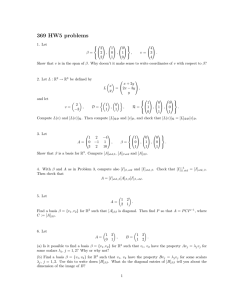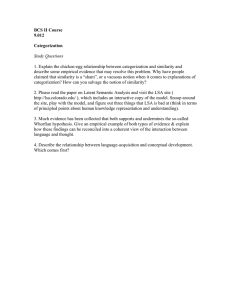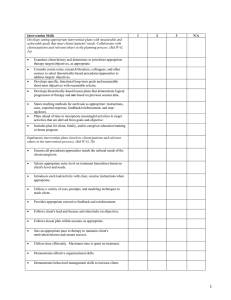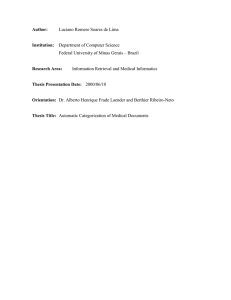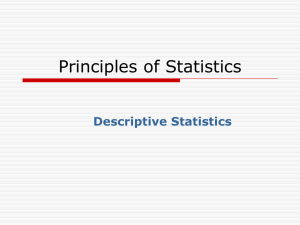Project Risk Categorization Worksheet
advertisement
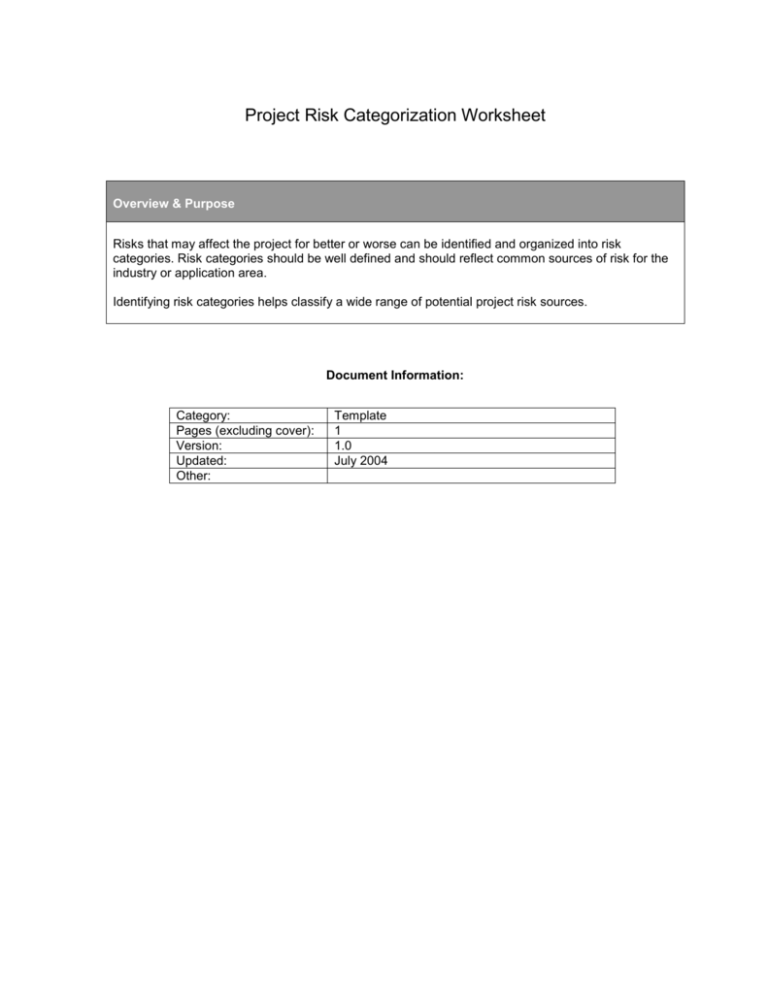
Project Risk Categorization Worksheet Overview & Purpose Risks that may affect the project for better or worse can be identified and organized into risk categories. Risk categories should be well defined and should reflect common sources of risk for the industry or application area. Identifying risk categories helps classify a wide range of potential project risk sources. Document Information: Category: Pages (excluding cover): Version: Updated: Other: Template 1 1.0 July 2004 Project Risk Categorization Worksheet Project Name Project Ref. No. Prepared By Date Prepared Customer Business Unit / Dept. Contact Project Type (STD / ADV) STD NOTE: List all identified project risks within each category. Retain this information for reference throughout the risk management process: Technical, quality, or performance risks—such as reliance on unproven or complex technology, unrealistic performance goals, changes to the technology used or to industry standards during the project . Project-management risks—such as poor allocation of time and resources, inadequate quality of the project plan, poor use of project management disciplines. Organizational risks—such as cost, time, and scope objectives that are internally inconsistent, lack of prioritization of projects, inadequacy or interruption of funding, and resource conflicts with other projects in the organization. External risks—such as shifting legal or regulatory environment, labor issues, changing owner priorities, country risk, and weather. Force majeure risks such as earthquakes, floods, and civil unrest generally require disaster recovery actions rather than risk management.
